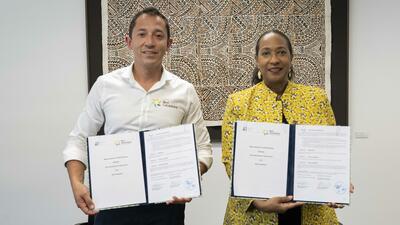Geographical Indications - Brands Withstand Downturn
Champagne, Roquefort cheese, Scotch whisky, Parma ham, Feta cheese – these well-known product names are but a few of the legally protected brands that flourish in developed countries, bringing employment and revenue to the geographic regions where they are developed.
Fewer products from developing countries have such familiar brand names, but there are some, including Basmati rice, Pampas beef, Tequila drinks and Blue Mountain coffee. Consumers in rich and poor countries alike are buying products with geographical indications, even when they cost more.
“Changing market trends offer new opportunities for developing countries to use geographical indications as a tool to reduce poverty through trade,” said Patricia R. Francis, ITC’s Executive Director. “This is why ITC is releasing a new guide on geographical indications.”
How to set up and monitor geographical indications and how to share costs and benefits are outlined in ITC’s new 230-page Guide to Geographical Indications - Linking products and their origins. The guide addresses the topic from the perspective of the business sector in developing countries, drawing from nearly 200 published reports and featuring eight case studies.
Almost 90% of just over 10,000 protected geographical indications come from 30 highly industrialized and developed countries. Products with geographical indications do more than US$ 50 billion of business annually.
While Darjeeling tea from India and coffee from Colombia, Jamaica and Mexico require no introduction to sophisticated consumers, other products do. Mysore sandal soap from India, shawls from the fine wool of Mongolian camels and Mezcal drinks from Mexico are examples of products which use geographical indications to catch the attention of consumers in global markets.
Geographical indications build a reputation for products that embody unique expressions of culture where they are grown or made. By obtaining geographical indications, countries get greater value for their products, rather than selling them as single commodities. Some consumers pay a premium because they want to be socially and environmentally responsible, and derive satisfaction from helping poor communities. There are also growing numbers of consumers who will pay a premium for quality brands that are tied to specific geographic areas.
This makes geographical indications more than commercial and legal instruments. As tools for rural development, they help build sustainable industry clusters in a geographic area, while preserving local values such as environmental stewardship, culture and tradition. At the same time they meet cutting-edge market demands with strict standards for quality, food safety and traceability. This leads to powerful commercial interests for parties along the entire value chain.
Trade support institutions – industry associations, chambers of commerce and government trade promotion bodies – are vital players in creating geographical indications, and will find this guide helpful in identifying potential geographical indications, organizing existing practices and standards, and planning to market, monitor and protect a geographical indication.
See www.intracen.org/publicationsfor the guide, available free in PDF format. Print copies are for sale for US $70 ($28 when ordered from developing countries) and can be ordered at www.intracen.org/eshop















